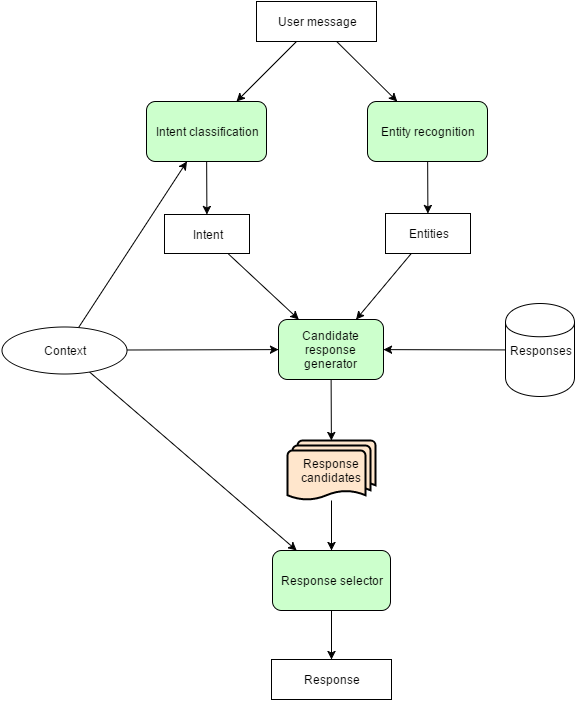Are you able to easily relate to any of these situations:
I have a meeting next week that I know will be tough. The sales team wants a new way to track their quarterly results, their just not able to articulate exactly what they want. In past meetings, they've quickly gone off track, and I wasn't able to fully capture their need. Or, ...
I'm facing some new challenges within our production org. Our traditional deployment process isn't quite working. We're letting things into production that we really shouldn't, but I'm not sure how to fully address that. Or, ...
Even though we're not using Lightning yet, I think I'd be a better admin if I just knew a little more about lightning components and how to design them. Or, ...
I've just been assigned a new salesforce project that is quite larger than my last one. There are new stakeholders, and it's going to require some development work that will really stretch my modest apex and visualforce skills. I think I can do it, but I'm not really a salesforce developer. I don't want to miss anything.
Or ... [insert your challenge here]
These are all challenges or problems we are likely to stumble upon at some point in our career. As Salesforce Admins, we LOVE solving problems. But we mostly love coming up with creative solutions for OTHER people's problems. Having to come up with solutions for our own personal problems isn't nearly as much fun.
But at the end of the day, the same talents and skills that allow us to create solutions for business leaders and their teams can be used to solve our own personal challenges and problems.
#AwesomeAdmins Turn Challenges Into Professional Development Opportunities
Every challenge you face is a new professional development opportunity. It's an opportunity because it presents you with a fresh, new chance to grow and learn.
Each time you tackle one of these challenges, you'll come away with a unique business understanding, newly applied learning, and increased personal skill sets. At the time, they may seem like incrementally small skills, but all those small changes add up over time.
Becoming a better Salesforce Admin simply involves managing your professional development opportunities, one after another. And then another. And then another. There's no shortcut to awesomeness. You get there incrementally, by overcoming each fresh, new personal challenge. By learning and succeeding (or even failing!) with new approaches. Your goal isn't to get a raise or land a big promotion at work. Your goal is to become better at your craft. You accomplish this be facing professional challenges head on, big and small, and growing through them.
Here's the good news: you don't need to go to a week-long salesforce training class to become a better admin (although it can definitely help). You don't need to get a Salesforce Admin certification (although this can help, too!). You don't need to go to Dreamforce, attend a Salesforce User Group meeting, or even spend a lot of extra time out of the office to become a better Salesforce Admin (although many of us enjoy the camaraderie from ALL of these things).
Awesome Admins Fix Problems – One at a Time
So, how do you go about tackling that growing list of professional development opportunities? Really, the same way you tackle any work challenges:
- Describe the problem clearly. Give it a name. Write it down. Maybe throw it up on your own personal Kanban board (Trello is GREAT for this). For those challenges above, you might name your challenges: Run a Better Requirements Gathering Meeting, Create a More Robust Deployment Process, Learn How To Build Lightning Components, Tackle Project X
- Brainstorm ways you might address the challenge in a new way. If this is a team problem, then brainstorm with your team. Even if it's a personal challenge, you can reach out to your social networks (Trailblazer Community, local user group, Twitter, etc.) to solicit ideas.
- Got a collection of ideas? Good! Invest some time learning something new about each approaches. Maybe one of the ideas was to tackle this problem using Flows, and another was to use Apex -- neither of which you're strongly familiar with. Dedicate time to learning about both. You don't need to learn EVERYTHING about the approach, just spend 15-30 minutes learning about the approach to help you evaluate if it's a practical choice.
- Decision time: select whichever seems to be the best solution. Commit to trying it.
- Start working through the solution. If the challenge is particularly large, break it up into smaller manageable chunks. In this way, a big challenge becomes many smaller ones. That may seem more intimidating at first, but each is more achievable. As you complete each smaller objective you'll be working toward the larger goal, but also building your accomplishments (and thereby, your confidence), along the way.
- Stuck? Ask for help! It's ok to reach out to your manager, peers, or salesforce ohana to solicit input or advice as your working through the solution. Never feel like you need to go at solving a problem on your own, even if you're the only knowledgeable salesforce resource in your company!
- Assess your results periodically. Reflect. What worked? What did not work? Capture this in writing!
- Do it again. Repeat this cycle, every day, every week, every month.
Invest a bit of team each week to tackle your personal challenges. Your mindset about dealing with them will shift as you take the same disciplined approach you take for all other business challenges. As you make progress, your confidence will grow. Your skill set will grow. You'll be increasing the value you provide to your organization. And you'll be upgrading to a better, improved version of yourself: #AwesomeAdmin 2.0












